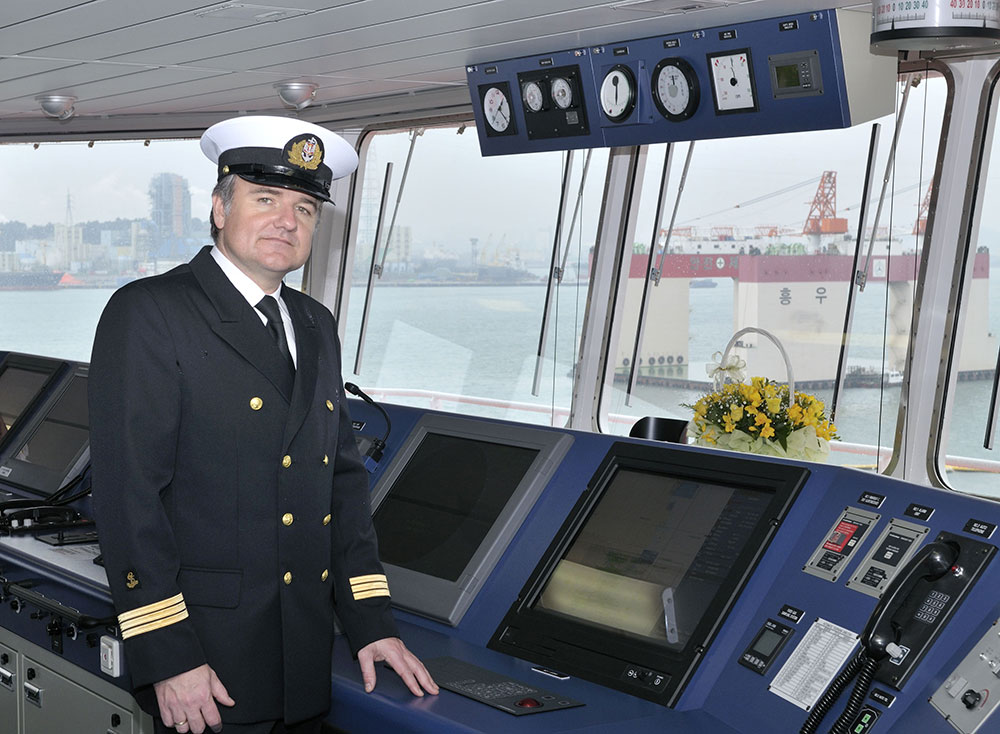Disclaimer: The information on our website is provided for general information purposes only. We make no representations or warranties of any kind, express or implied, about the completeness, accuracy, reliability, suitability or availability with respect to the website or the information contained on our website for any purpose. Any reliance on such information is therefore strictly at your own risk and we are not liable for any damages or losses arising out of or resulting from your reliance on any information contained on our website.
A ship captain is in command of water vessels in lakes, oceans, coastal waters, rivers, or bays. They ensure the safe and efficient operations of vessels. A ship captain navigates their vessel according to weather conditions and uses radar, depth finders, radios, buoys, lights, and even lighthouses. They determine sufficient levels of oxygen, hydraulic fluid, or air pressure of the vessel.
Learn what a ship captain does:
How to Become a Ship Captain
Becoming a ship captain takes education and experience. Visit the Bureau of Labor Statistics website for a detailed overview of the education and experience needed as a Water Transportation Worker.
Job Description of a Ship Captain
A ship captains’ duties vary a little according to the type of vessel he or she commands. For example, there are ship captains, ferry boat captains, tug boat captains, and charter boat captains. However, all captains typically command the crew of the vessel and determine the vessel’s speed, set the travel course, use depth-measuring equipment, compute the vessel’s position, docks and undocks the vessels, and use charts, compasses, area plotting sheets.
Ship captains must also know how to read weather reports and adjust their navigation as appropriate and signal other vessels that may be passing using radios, flags, whistles, or flashing lights.
Ship Captain, Mates, and Pilots Career Video Transcript
Seafaring is not just a career, it’s a lifestyle. Captains, mates, and ship pilots spend their days on the water on vessels of all sizes, on inland lakes and rivers, as well as the open sea. The captain is responsible for every aspect of the voyage and vessel. They set course and speed, direct crew members, and ensure that proper procedures are followed, keeping logs and records of the ship’s movements and cargo, and supervising the loading and unloading of cargo and passengers.
Mates are the captain’s “right hand.” They manage and train the deck crew, inspect and maintain inventory of equipment, and order needed repairs. They stand watch, oversee ship operations, and navigation when the captain is not on duty. Pilots are responsible for steering ships in and out of berths, through hazardous conditions, and boat traffic. They motor out from harbor as a ship approaches, then climb aboard to take charge and safely berth the ship. Life aboard ship requires that one must be in good physical condition to tolerate the extremes of weather and irregular hours, and to be ready to respond to unexpected danger.
Captains and ship pilots are expected to have vocational training or an associate’s degree, while mates often have a high school diploma. All require experience onboard ships. Licensing by the Coast Guard is required for work on ships registered in the U.S. If you can’t resist the call of the sea, you might set sail for a nautical career.
Article Citations
- Bureau of Labor Statistics, U.S. Department of Labor, Occupational Outlook Handbook, Ship Captain.
- National Center for O*NET Development. 53-5021.01. O*NET OnLine.

